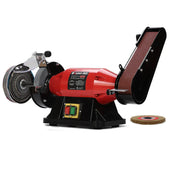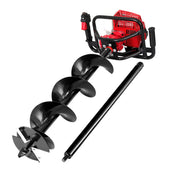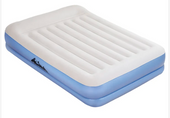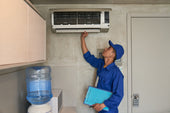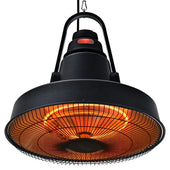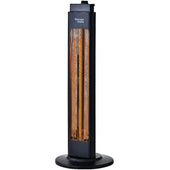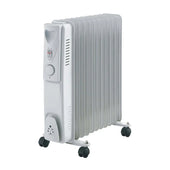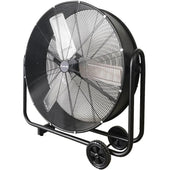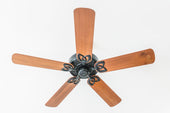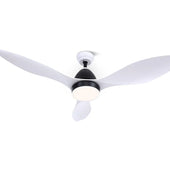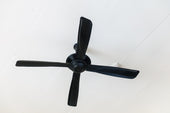Introduction to Sofa Reupholstery Costs in Australia
Sofa reupholstery in Australia involves various factors that significantly influence its cost. These factors include the size and style of the sofa, the condition of the frame, and the type of fabric chosen. Labour costs, which vary across regions, also contribute to the overall expense. Upholstery options range from standard materials like polyester to premium fabrics such as velvet or leather, each with distinct price points. Additional charges may apply for details like tufting, piping, or decorative trims. Comparing quotes from professional upholsterers can help homeowners estimate expenses while ensuring quality craftsmanship and durable results for their furniture.
Why Reupholster a Sofa Instead of Buying New?
Reupholstering a sofa provides an opportunity to keep a cherished piece of furniture while giving it a fresh lease of life. It is ideal for maintaining high-quality, well-built frames, which are often superior to many mass-produced options available today. Reupholstery allows personalisation, enabling choices in fabric, colour, and design to match existing décor. During Days highlights that It can save money, especially for premium sofas, as purchasing new ones of similar quality may cost significantly more. Reupholstering supports sustainable practices, reducing waste by avoiding disposal. For sentimental items or antiques, it preserves emotional value while restoring function and aesthetics.
Factors That Influence the Cost of Sofa Reupholstery
Several factors play a role in determining the cost of sofa reupholstery.
Material Selection
The type of fabric or leather chosen significantly impacts the price. Premium materials such as velvet or high-grade leather often cost more than polyester or cotton.
Sofa Size and Design
Larger sofas require more material and labour, and intricately designed pieces with tufting or curved frames tend to be pricier to reupholster.
Labour Costs
Specialised craftsmanship affects the overall expense. Skilled workers handling unique or antique sofas may charge higher fees for their expertise.
Condition of the Sofa
Damaged or worn-down sofas needing extensive repairs can increase costs due to additional labour and materials.
Regional Variations
Local economic factors and demand for upholstering services influence pricing, leading to differences between regions.
Breaking Down the Labour Costs for Reupholstery
Labour costs for reupholstery vary depending on several factors, including skill levels, complexity of design, and regional differences. Professional upholsterers invest time in tasks such as removing old fabric, repairing structural components, and attaching new materials. Simple designs may cost less, while intricate cushions, tufting, and custom stitching increase labour costs.
Hourly rates typically range between £30 and £60, with some professionals charging a flat fee based on project size. Factors like sofa dimensions, fabric weight, and requested alterations affect the overall pricing. Access to the sofa or unusually tight spaces may also add to the labour expenditure.
Material Choices and Their Impact on Costs
The selection of fabric significantly influences reupholstery costs. Materials vary in price based on quality, durability, and design. Natural textiles like cotton and linen are often more affordable, but they may lack the longevity of synthetic options. Premium fabrics such as leather or velvet are expensive, reflecting their luxurious quality and resilience.
Patterns, textures, and colours also affect pricing, as intricate designs often require more labour. Upholstery-grade fabrics generally cost more due to their durability compared to regular textiles. Buyers should consider maintenance requirements, as higher-priced fabrics may incur additional cleaning costs over time.
What Does the Process of Reupholstering a Sofa Involve?
Reupholstering a sofa involves a detailed, step-by-step process that can restore its appearance and functionality. The procedure typically begins with the removal of the old fabric and any damaged padding. Staples, tacks, or glue holding the fabric in place are carefully extracted. Next, the frame and springs are inspected for structural soundness, with necessary repairs made to ensure durability.
Once the frame is prepared, new padding is applied to enhance comfort. The fabric of choice is then measured, cut, and meticulously attached to the sofa. Finally, finishing touches, such as trimming excess material and adding decorative detailing, complete the process.
Comparing Costs Across Australian States and Cities
The cost to reupholster a sofa in Australia can vary significantly depending on location. Metropolitan areas such as Sydney, Melbourne, and Brisbane typically have higher prices. Factors like increased demand, local labour rates, and higher overhead expenses contribute to the higher costs in these cities.
Meanwhile, regional areas and smaller cities, such as Hobart or Darwin, may offer slightly lower prices due to reduced operational costs. Material availability and shipping fees can also influence pricing, especially when sourcing premium fabrics.
Consumers might also notice differences between states, with costs in New South Wales often exceeding rates in South Australia or Western Australia. Regional variances depend heavily on accessibility to skilled upholsterers and workshops nearby.
Hidden Costs: Additional Charges to Watch Out For
When reupholstering a sofa, additional charges can emerge beyond the quoted price. Potential hidden costs include:
- Fabric Protection: Adding stain-resistant treatments may accrue extra fees.
- Extra Materials: Foam, batting, or additional fabric requirements can inflate costs.
- Complex Design Features: Intricate styles or customised detailing may require more time and expertise, leading to higher charges.
- Delivery or Transportation: Moving the furniture to and from the upholsterer might incur additional expenses.
- Frame Repairs: Weak or damaged frames could necessitate separate repair fees.
By enquiring upfront, homeowners can avoid unexpected expenses and budget more effectively for the project.
How to Choose the Right Upholstery Specialist in Australia
Selecting a reliable upholstery specialist requires careful consideration. Start by researching local professionals and seek recommendations from friends or online reviews. Verify their qualifications, such as certifications or years of experience, to ensure expertise. Review their portfolio to assess the quality of previous work and evaluate if their style aligns with your preferences.
Request detailed quotations to compare pricing, ensuring transparency about material costs, labour, and timelines. Check if they offer warranty or aftercare for reupholstered furniture. Visiting their workshop can provide insight into their craftsmanship and techniques. Prioritise those with excellent customer feedback and a proven track record in Australia.
Tips to Minimise Reupholstery Expenses Without Compromising Quality
- Choose Durable Fabrics: Selecting strong, long-lasting materials like polyester blends or microfibre reduces replacement frequency, saving money over time.
- Reupholster Only What’s Necessary: Instead of redoing the entire sofa, consider focusing on sections with the most wear and tear, such as seat cushions or specific panels.
- Reuse Existing Padding: If the current foam or padding is in good condition, retaining it can significantly cut costs.
- DIY Minor Repairs: Small fixes, like tightening loose springs or stitching minor tears, can be performed without professional help.
- Shop Around for Quotes: Comparing multiple upholsterers’ prices ensures value for money while maintaining high craftsmanship standards.
The Environmental and Emotional Benefits of Sofa Reupholstery
Reupholstering a sofa can significantly reduce waste and environmental impact. Instead of discarding old furniture, it allows for the preservation of existing materials, lowering landfill contributions. The process requires fewer resources compared to manufacturing new items, making it a greener choice for sustainability-conscious individuals.
Emotionally, reupholstery can rejuvenate cherished furniture pieces, preserving their sentimental value. Customisation options enable homeowners to refresh designs to suit evolving tastes, fostering a deeper connection with their living spaces. By restoring rather than replacing, it promotes a sense of pride and satisfaction, blending practical and emotional benefits seamlessly.
When is Reupholstering Worth It? A Cost-Benefit Analysis
Deciding whether to reupholster a sofa depends on various factors.
- Furniture Quality: It is worth reupholstering high-quality pieces constructed from hardwood or antique furniture that holds sentimental or monetary value. Replacing such items may cost significantly more than restoring them.
- Customisation Needs: If specific fabric choices, patterns, or designs are required, reupholstery allows individuals to customise according to preferences.
- Environmental Considerations: Reupholstering helps reduce waste and supports sustainable practices by extending a sofa's lifespan.
- Cost Comparison: Replacing a similar sofa may exceed initial reupholstery expenses, especially for custom or designer furniture.
However, for lower-quality or heavily damaged frames, a replacement may be more practical.
Alternatives to Sofa Reupholstery: Is It Always the Best Option?
Reupholstering a sofa may not always be the most practical or cost-effective choice. Other alternatives can refresh the appearance and functionality of a sofa without the involved process of reupholstery:
- Slipcovers: Ready-made or custom slipcovers offer an affordable and versatile solution. They can fit over the existing upholstery, providing a new look without significant expense.
- Cushion Replacement: If only the cushions are worn, replacing foam or covers could solve comfort and aesthetic issues.
- Furniture Covers: Quilted or decorative furniture covers can hide imperfections while protecting the sofa from further wear.
- Partial Repairs: Minor issues like torn fabric or loose seams may be fixed locally, avoiding full reupholstery.
Conclusion: Budgeting for Sofa Reupholstery in Australia
Planning for sofa reupholstery costs requires a clear understanding of factors influencing the price. Australian upholsterers often charge based on the fabric type, craftsmanship, sofa size, and complexity of the design. Homeowners should consider fabric selections, as premium materials such as leather or velvet can substantially increase expenditures. Labour rates in urban areas like Sydney or Melbourne are typically higher compared to rural regions. Additional costs might include padding replacement, decorative trims, or transport. Comparing quotes from multiple professionals ensures competitive pricing. Utilising local expertise for detailed cost breakdowns will help homeowners budget effectively while maintaining quality.



